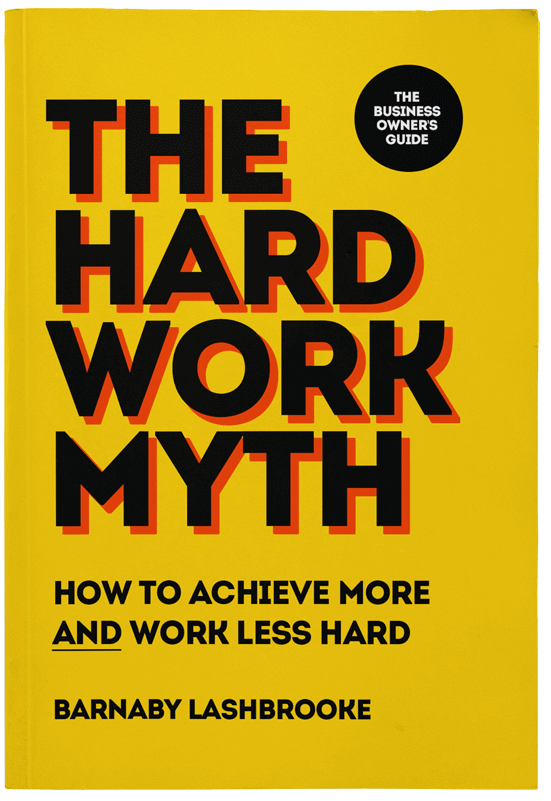Believe it or not, 41% of small business owners think they don't need a website or that their customers are not online. Unfortunately, this is not the case. The COVID-19 pandemic has accelerated e-commerce four to six years to a 77% increase in revenue year-over-year.
But even those who do have a website might not be seeing results. They're getting little to no traffic, no leads, and no sales. For their efforts to pay off, they need to be strategic about setting up and maintaining their website.
So, what does your website need to get that all-important traffic, leads, and sales?
These are my five tips to optimize your site and grow your business.
Tip #1: Blog With Regularly Updated Content
Content is still king, and blog posts are among the top three pillars of content strategies today. But not just any blog will do the trick. To get results, you'll need to commit to creating content regularly.
Let's start with the basics. What makes a successful blog?
Consistency
You don't have to update it every day, but you do need to be consistent. Your readers will stick around as long as they know they can expect content from you regularly. So, don't offer more content than you can deliver. If you know you can post once a week or even twice a month, that’s fine as long as you stick with it.
Useful, actionable content
Quality content increases traffic to your blog. Every post needs to teach your readers something new, but it doesn't have to be long, in-depth tutorials. You could write about your experiences and what you have learned. As long as your reader gets to the end of the article feeling they know something new or different, you're adding value.
Long-form content
The days when you could churn out low-quality, keyword-bloated 500-word blog posts are over. Google may penalize your website for that kind of content. Research shows long-form content works better -- it's good for SEO and it lets you dig deeper into the topic, offering more value.
Blogging basics
Setting up a blog can be daunting. You could write about anything, and it takes a long time to plan, research, outline, write, edit, and format. Planning will save you time and keep you consistent. So, how do you set up a successful blog?
1. Establish clear goals
Usually, a blog is a space to share your knowledge, build an audience, and attract visitors to your site. However, you can do so much more with it. You can use it to promote your products or services, increase sign-ups to your courses or webinars, promote downloads or get leads.
To do this, the content needs to be intentional. So how do you set these intentions and goals?
If you're new to web design or marketing, these questions may be hard to answer on your own. So, start from the very beginning. Even if you've done this already, sit down for a few minutes to answer these questions.
- What does your business do?
- Who is your target audience? What do they do? Where do they live? How old are they? Describe them as if they were a character in a TV show.
- What is one goal your website will help you achieve? Be as specific as possible. You might need to do a little research about this. For example, it could be to get 10 new leads per week or one new client per week.
- How are you going to achieve that? For example, what will you offer on your website to show the value you can bring to your clients? Will you start a newsletter? Offer webinars or courses? Show samples of your work? Offer free consultations?
It may seem like a lot of work, but knowing who you're talking to on your blog will help you come up with the right content for them.
2. Create content buckets
A successful business blog can't be about whatever you want.
Content buckets are the broad subjects your blog will include. You need to write about topics that are related to your industry and that your audience cares about. You can add subcategories within each bucket, but starting with the main groups will help you narrow down your ideas and make sure what you write is useful to your audience.
For example, if your own a fishing supplies store, these are some content bucket ideas:
- Product reviews
- Fishing tips
- Best fishing locations
- Fishing competitions
- New trends in fishing (it could be gear and gadgets or new regulations in your area)
- Store updates and promotions
Now that you've narrowed down your topics, it's time to plan what you'll write about.
3. Create a schedule
The best way to stay consistent is to create a content schedule. This can be daunting, but it'll make maintaining your blog so much easier.
One easy way to create a content calendar is:
a) Decide how often you're going to post. There's no need to update daily, what matters is to stay consistent. If you don't have a lot of time for a blog, you can either delegate it or decide to update once or twice a month.
b) Make a note of all the holidays that are relevant to your business in the next six months.
c) Then, write down any special offers and events you're planning.
d) With all those important dates in mind, brainstorm topics based on those dates and events.
e) Plan when you're going to post each of the posts in your calendar.
f) If you still have gaps in your calendar, have a look at your content buckets and think about what you'd like your audience to learn about that. For example, do you have a new and exciting product coming out? Is there a new fishing location you have to tell everyone about? Use these to fill any spaces.
f) You're done!
4. Update your blog posts
Besides adding more content to your website and blog, it's good practice to review your existing content frequently and make changes where necessary. A good rule of thumb is to review and make small changes quarterly, and refresh your website design every 2 or three years.
You can do so after testing your website, making changes to your products or services, or rebranding, after an algorithm or your goals change, or if a page has not been performing well in rankings or conversions.
What kind of changes should you make to your website?
- Replace your images. Maybe a test showed that images with people perform better at certain parts of your home page, for example.
- Read each blog post again. Maybe there's a typo you missed or new information to add. Check that every link works and that each image loads properly. Make note of any amendments that need to be made and schedule a few days to make the changes.
- Refresh your content. If some of the information in your previous posts is too outdated, a new post with updated information is an easy subject to add to your content calendar.
- Optimize your content. If your goals have changed, you may need to consider new keywords. So, you'll have to make changes to your content plan accordingly.
Tip #2: Testimonials and Client Feedback
Sharing your customer's thoughts on your website is crucial to build credibility and help prospects picture what it will be like to use your products or services.
This is called 'social proof,' and it can be the difference between a 'yes' and a 'no' when it comes to making more sales. In fact, 85% of consumers trust online reviews as much as personal recommendations, and virtually all consumers aged 18-29 check reviews before making a purchase.
There are a few ways you can use social proof on your website.
Testimonials
Client testimonials are a great way to introduce your products to your audience on your website.
These are usually reviews from important or prominent clients and are included in the homepage, landing pages, or a separate testimonial page on your website. You can get testimonials either by sending surveys to your clients or requesting them directly.
User comments
So, you've already included testimonials, but allowing comments on your products, services, or blog posts will make your business more authentic in the eyes of site visitors. Also, giving your clients a place to leave comments makes your website more engaging and allows you to monitor the conversation around your products and services.
Review websites
Another option is to sign up for third-party review websites. The appeal for both consumers and businesses is that they offer unbiased reviews, both positive and negative. Unlike testimonials and comments on your website, you can't control reviews on third-party websites, so users tend to find them more reliable. These review services offer widgets to seamlessly show them on your page.
Tip #3: Social Media Feeds
Having a website with no social media accounts is planning an event without promoting it. Social media spreads the word, forms a community around your brand, and establishes your company as reputable.
Social media profiles are helpful tools to monitor conversations around your brand, learn more about your customer’s needs, and connect with them in different ways.
Your social media accounts don’t have to live separately from your website. You can embed your social media feeds onto your website to make the most out of the content you create for them.
Video performs particularly well on social media platforms, so it’s an option worth exploring.
Videos
While text is the base of the web, video is only growing in user preference, and it's estimated to reach over 80% of all internet traffic in 2021. What does that mean for you? Well, over 70% of users prefer learning about a product or service through video.
So, while blog posts are great for your SEO and social media helps you reach more customers, video is what can make them stay.
The only drawback of video is that it needs more time and resources. However, if you're keen to use all that's available to you to grow your business, video can be a great asset.
How can you use video on your website:
- Tell your brand's story. This isn't self-indulgent, it's a way for customers to know if you align with their goals and values, and what you can do for them.
- Do product or service demos. If you sell physical products, recording short videos to show your products can help prospects make a decision. If you sell services, creating demos will give them an idea of what it's like to work with you.
- Share knowledge with courses and tutorials. Give people an idea of the value you can provide by teaching them what you know.
- Entertain and engage with your audience. People remember first and foremost how you make them feel. If your brand allows it, uploading fun, engaging content will keep their attention on your brand and build a community of loyal followers.
But, if you use videos on your website, you should turn off autoplay.
Tip #4: Mobile Responsivity
About 80% of all web traffic now comes from mobile devices. If your website is not optimized for smartphones and tablets, you're missing out on a huge chunk of your traffic. After all, not many customers will wait around for your slow website to load, and if the layout looks wonky, it may come across as unprofessional.
Responsive design is now a standard in web design. So if you're working with a web designer, they should make sure it works well on mobile.
The best way to know how your website works is by testing. It can be as easy or hard as you need. For example, you can ask your friends and family to check out your website and ask for their opinion on the copy, design, usability, and products.
You could sign up for a testing website or set up A/B tests to figure out which copy, design choices, or offers work best.
If you're creating the website yourself, make sure to choose a responsive template and to test the website several times on different devices to check how it looks, how long it takes to load, if all buttons work, and if anything is obscured or out of the layout.
Testing will tell you straight away what you need to optimize or improve.
Calls-to-Action
CTAs are both an art and a science. There's research showing what works and what doesn't for those pesky little buttons, and again, it will depend on your business and goals. One thing's for certain, though: you need to give some thought to your calls-to-action.
The design will fall on your web designer, but the copy falls on the copywriter. If you're writing the copy yourself, keep these tips in mind to improve your CTAs.
- Make small requests: Words like 'buy', 'sign up,' even 'learn' imply some effort from your customers. You're asking them to part with their money, give them their contact information, or spend time learning something. Instead, write your call-to-action buttons based on what your customer wants. For example, instead of 'download' as the CTA, an option could be 'get this item for free.'
- Keep options to a minimum: Too many options are paralyzing, so avoid plastering your website with a ton of buttons.
- Avoid negative language. Exit buttons with copy like "No, I don't want to become a successful business owner" only antagonize your audience. Keep in mind that a prospect doesn't always convert right away, so make sure to make each visit to your website a pleasant experience.
Tip #5: Live Chat / Facebook Messenger Integration
Live chats can be an important asset to your website. You have a few choices here. You can hire staff to offer customer support via live chat, you can build a chatbot, or combine both.
Yes, people prefer talking to other humans instead of robots, but each option has its pros and cons.
Human support agents can handle more complex requests, send personalized replies, escalate issues, and incorporate elements of marketing and sales in their replies more easily. On the other hand, they're bound to time zones and can be more costly.
Chatbots can be online 24/7 to help customers anywhere in the world and represent a less costly option once they're built and implemented, but they can only handle simple requests and require experts to set up.
The solution will depend on your business, budget, and clients. If your customer support needs are very low, you'll benefit from a chatbot that performs simple tasks like asking for feedback and ratings, or sharing new products with your site visitors. It’s also a great tool to guide the user to resources like FAQ pages or tutorial content.
Add a FAQ page
If you sell anything online, or anywhere in fact, your customers are bound to have questions. This may mean you or your support team will have to answer those questions dozens, if not hundreds of times. So, save yourself and your clients some time by adding a FAQ (frequently asked questions) page.
You may already have an idea of the most common questions or queries your customers have, but if you need inspiration to get started, check out your competitor's websites. Common FAQ categories are usually around pricing, shipping, refund and exchange policies, and troubleshooting, but of course it all depends on what you offer.
Your FAQ page is not just a way to boost your SEO and save everyone time, it is an effective way to avoid preventable customer issues, help you outline your policies and values, and show your business as professional and transparent. You can also use it as a place to feature any long-form tutorials or troubleshooting videos and graphics.
Final Thoughts
So, for your website to help you achieve your goals, you need to be strategic about it. Start by defining your goals, and determine which elements are needed to help you get there. Whether it's building a community, expanding your reach, or selling more products, an optimized website holds the key.
See: How A Virtual Assistant Can Help With Your E-Commerce Business







